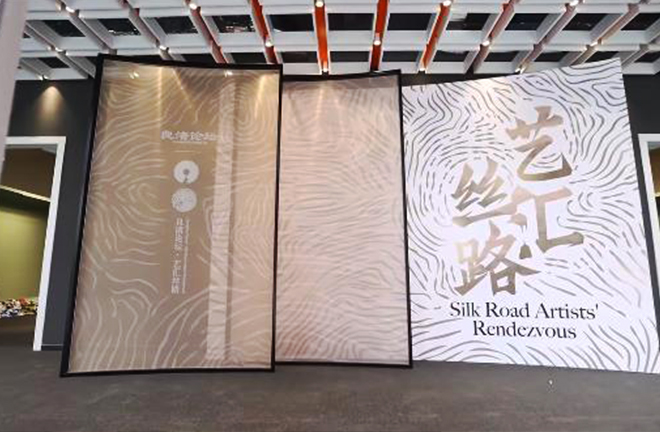Forum opens new space for inter-civilizational exchanges

The exhibition “Silk Road Artists Rendezvous” is being held from Dec. 3, 2023 to Jan. 2, 2024 at Liangzhu Museum in Hangzhou, Zhejiang Province, as part of the first Liangzhu Forum. Photo: LIANGZHU MUSEUM
On Dec. 3, the first Liangzhu Forum was held in Hangzhou, east China’s Zhejiang Province, under the theme of “Implementing the Global Civilization Initiative, Promoting Exchanges and Mutual Learning Between Civilizations.” Chinese President Xi Jinping sent a congratulatory letter to the forum, noting that the ruins of Liangzhu ancient city are a demonstration of the 5,000-year history of Chinese civilization, and a treasure of world civilizations. He also emphasized that mutual respect, unity, harmony, and coexistence are the right path for the development of human civilization.
As one of the eight major steps for high-quality cooperation on the Belt and Road Initiative, the forum represents a significant measure China has taken to deepen civilizational dialogues with Belt and Road countries, opening new space for exchanges among civilizations around the world.
As one of the four major city-level sites under the scrutiny of the project to trace the origins of Chinese civilization, the ruins of Liangzhu ancient city have a longer history than the well-known Yinxu and Sanxingdui sites. For many years, Liangzhu has been regarded by Chinese archaeologists as one of the most valuable sites.
The Liangzhu Archaeological Site was inscribed in the World Heritage List at the 43rd Session of World Heritage Committee in July 2019. This achievement signaled that research outcomes regarding the origins and early development of Chinese civilization had successfully gone global, filling an important void in the history of world civilization.
Artifacts unearthed from the Liangzhu site have evidenced the splendid history of Chinese civilization spanning over 5,000 years. Related discoveries have not only extended the axis of Chinese history, but have also bolstered the credibility of its remarkable longevity, offering compelling evidence for the continuity of Chinese civilization.
Since antiquity, various regions have exhibited both similarities and differences in terms of social development. This fact has become the basis and premise for exchanges between different civilizations. More importantly, it determines that a civilization should not be defined by the “Western standard” that has been deemed a one-size-fits-all approach by many.
According to Zhang Yinglan, a professor from the School of Art and Archaeology at Zhejiang University, international academia has always considered “metallurgy, writing systems, and cities” as the three defining elements of a civilization. However, this criterion was based on the characteristics of the Mesopotamian and ancient Egyptian civilizations.
In-depth studies of Chinese prehistoric archaeological sites, represented by the Liangzhu site in Zhejiang, the Shimao ruins in northwest China’s Shaanxi Province, and the Taosi site in Shanxi Province in the country’s north, suggest that the development path varies across civilizations around the world.
This means the so-called “three defining elements of a civilization” are neither an absolute standard, nor the sole “template” for the development of global civilizations, Zhang said.
Even in terms of the ancient Egyptian civilization, from a broader perspective, civilizations in vast border areas of Asia, Africa, and Europe were unlikely to develop independently of other civilizations, said Guo Zilin, a research fellow from the Chinese Academy of History under the Chinese Academy of Social Sciences, adding that these civilizations communicated, more or less, with surrounding cultures or civilizations. Therefore, it is unreasonable to measure the diversity of global civilizations by the Western standard.
Participating scholars of the forum agreed that the entire world civilization is a colorful garden of diverse cultures which have nurtured diverse civilizations. This rich tapestry of cultural diversity is not only a cherished collective treasure of humanity, but is also conducive to advancing the better development of contemporary society.
The forum was jointly held by the Ministry of Culture and Tourism of China and the People’s Government of Zhejiang Province.
Edited by CHEN MIRONG
